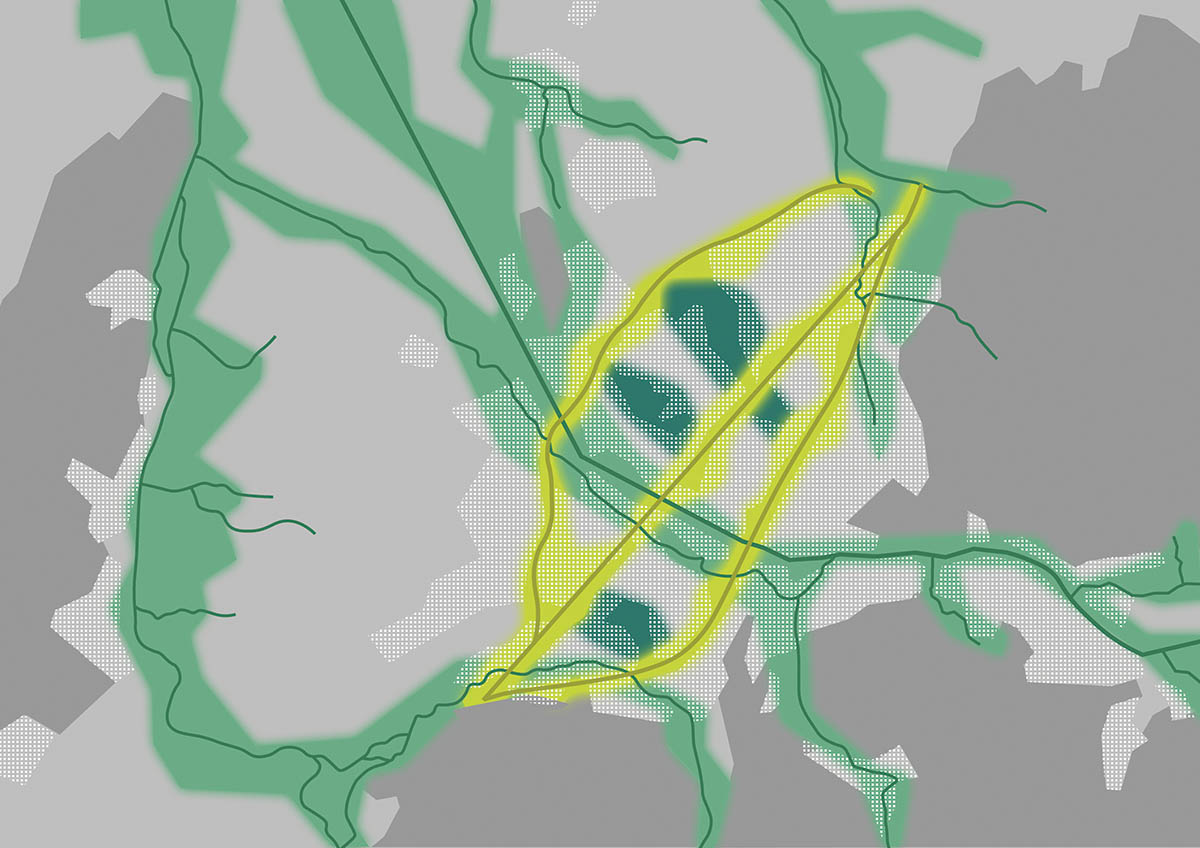Identifying particular places through experimental walking
Downloads
DOI:
https://doi.org/10.7480/spool.2016.1.1373Abstract
Experimental walking can be used to identify particular places, design strategies and spatial visions for urban landscapes. Walking designers can explore sites and, in particular, their temporal dynamics and atmospheric particularities – both essential elements in making particular places. This article illustrates the benefits of this method, using the changing German city of Freiburg as an example.
How to Cite
Schultz, H. (2016). Identifying particular places through experimental walking. SPOOL, 3(1), 57–66. https://doi.org/10.7480/spool.2016.1.1373
Published
2016-11-28
License
Copyright (c) 2020 SPOOL

This work is licensed under a Creative Commons Attribution 4.0 International License.

References
Burckhardt, L. (2015). Why is landscape beautiful? - The science of strollology. Berlin, Germany: Birkhäuser.
Diedrich, L. (2013). Translations: radicant design for transforming harbour sites. Portusplus, issue 2012. www.reteonline.org
Fezer, J., & Schmitz, M. (2012). Lucius Burckhardt Writings: Rethinking Manmade Environments, Politics, Landscapes & Design. Wien, Austria, New York, NY: Springer.
Fischer, R. (2011). Walking Artists: Über die Entdeckung des Gehens ins den performativen Künsten [Walking Artists: Discovering walking in the performative arts]. Bielefeld, Germany: Transcript.
Latour, B. (2004). Politics of Nature: How to Bring the Sciences into Democracy. Cambridge, MA: Harvard University Press.
Lukas, S., & Bradwell, T. (2010). The Quaternary of Western Sutherland and Adjacent Areas, Field Guide. London, United Kingdom: Quaternary Research Association.
Nowotny, H., Scott, P. & Gibbons, M. (2001). Re-Thinking Science: Knowledge and the Public in an Age of Uncertainty, Cambridge, United Kingdom: Polity Press.
Schön, D. A. (1984). The Reflective Practitioner: How Professionals Think in Action. New York, NY: Perseus Books.
Schultz, H., (2014). Designing large-scale landscapes through walking. In: Journal of Landscape Architecture (JoLA) 2014/2. London, United Kingdom: Routledge.
Schultz, H. (2014b). Landschaften auf den Grund gehen, Wandern als Erkenntnismethode beim Großräumigen Landschaftsentwerfen [Designing large-scale landscapes through walking]. Berlin, Germany: Jovis.
Seggern, H. v. (2000). “Alles Kunst” – Soziale Differenzierung, Polarisierung und öffentlicher Raum – Ein Plädoyer für komplexe Experimente. In: Harth, A., Scheller, G. and Tessin, W. (Eds.) Stadt und Soziale Ungleichheit. Opladen, Germany: Leske+Budrich (pp. 310-321).
Seggern, H. v., Werner, J., & Grosse-Bächle, L. (2008). Creating Knowledge: Innovationsstrategien im Entwerfen urbaner Landschaften. Berlin: Jovis, 252-265
Sinclair, I. (2005). London Orbital. London, United Kingdom: Penguin.
Solnit, R. (2000). Wanderlust: A History of Walking. New York, NY: Viking.
Diedrich, L. (2013). Translations: radicant design for transforming harbour sites. Portusplus, issue 2012. www.reteonline.org
Fezer, J., & Schmitz, M. (2012). Lucius Burckhardt Writings: Rethinking Manmade Environments, Politics, Landscapes & Design. Wien, Austria, New York, NY: Springer.
Fischer, R. (2011). Walking Artists: Über die Entdeckung des Gehens ins den performativen Künsten [Walking Artists: Discovering walking in the performative arts]. Bielefeld, Germany: Transcript.
Latour, B. (2004). Politics of Nature: How to Bring the Sciences into Democracy. Cambridge, MA: Harvard University Press.
Lukas, S., & Bradwell, T. (2010). The Quaternary of Western Sutherland and Adjacent Areas, Field Guide. London, United Kingdom: Quaternary Research Association.
Nowotny, H., Scott, P. & Gibbons, M. (2001). Re-Thinking Science: Knowledge and the Public in an Age of Uncertainty, Cambridge, United Kingdom: Polity Press.
Schön, D. A. (1984). The Reflective Practitioner: How Professionals Think in Action. New York, NY: Perseus Books.
Schultz, H., (2014). Designing large-scale landscapes through walking. In: Journal of Landscape Architecture (JoLA) 2014/2. London, United Kingdom: Routledge.
Schultz, H. (2014b). Landschaften auf den Grund gehen, Wandern als Erkenntnismethode beim Großräumigen Landschaftsentwerfen [Designing large-scale landscapes through walking]. Berlin, Germany: Jovis.
Seggern, H. v. (2000). “Alles Kunst” – Soziale Differenzierung, Polarisierung und öffentlicher Raum – Ein Plädoyer für komplexe Experimente. In: Harth, A., Scheller, G. and Tessin, W. (Eds.) Stadt und Soziale Ungleichheit. Opladen, Germany: Leske+Budrich (pp. 310-321).
Seggern, H. v., Werner, J., & Grosse-Bächle, L. (2008). Creating Knowledge: Innovationsstrategien im Entwerfen urbaner Landschaften. Berlin: Jovis, 252-265
Sinclair, I. (2005). London Orbital. London, United Kingdom: Penguin.
Solnit, R. (2000). Wanderlust: A History of Walking. New York, NY: Viking.



